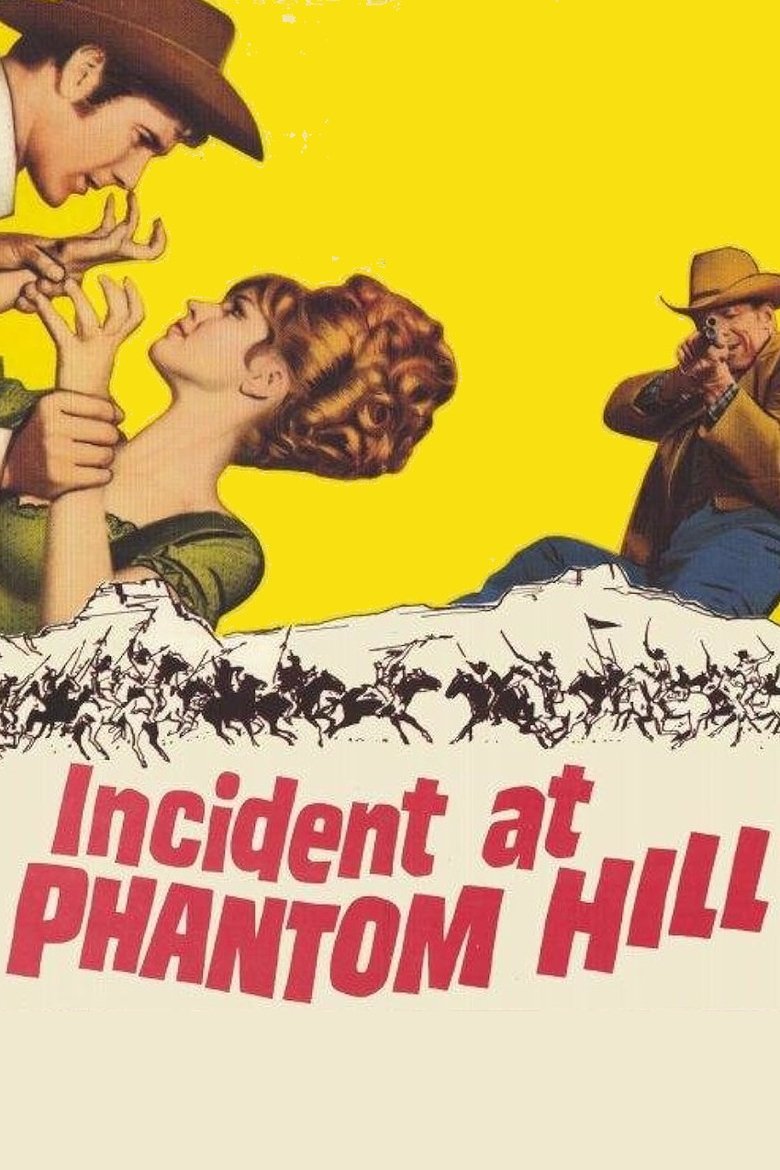
Incident at Phantom Hill
At the end of the Civil War, a major shipment of gold has been stolen and buried in the desert. Only one man knows the whereabouts of gold and the army sends captain Matt Martin to arrest him and come back with the gold. Martin, his prisoner and a handful of men enter Indian territory in search of the precious cargo. The Apaches, outlaws and storms will make it not too easy.

John Chard@John Chard
You're trash, just like me. Only difference is I'm rich trash.
Incident at Phantom Hill is directed by Earl Bellamy and jointly adapted to screenplay by Frank Nugent and Ken Pettus from a story by Harry Tatelman. It stars Robert Fuller, Jocelyn Lane, Dan Duryea, Tom Simcox, Linden Chiles, Claude Akins and Noah Beery Jr. A Techniscope/Technicolor production, music is by Hans J. Salter (Joseph Gershenson supervising) and cinematography is by William Margulies.
"From a forgotten page of history, this is the story of The Phantom Hill Incident, and the events that followed..."
It's a roll call of fine Western character actors, with the square jawed Fuller leading off on alpha male duties, behind him Akins (Comanche Station), Duryea (Winchester '73) and Noah Beery Jr (Decision At Sundown) lift the standard plot formula to better heights; further enhanced by the appearance of Denver Pyle (Fort Massacre) in a deliciously vile secondary villain role.
Plot is set at the end of the Civil War and finds Captain Martin (Fuller) accepting a covert mission to locate a gold shipment that was snatched from a Union party by a rebel Confederate gang led by Joe Barlow (Duryea). During the attack, Martin's brother was killed and this drives Martin forward on his mission. With Barlow offered a pardon to lead them to the gold, Martin, a small group of men, and a "Madame" (Lane) who has been sanctimoniously ushered out of Hays City, set off to the Staked Plains looking for the hidden gold. But this is area ceded to the Commanche and outlaws stalk the land looking for ill gotten gains. Enough problems there as it is, but with water running low and the group coming apart due to differences and Barlow's scheming, it will be a small miracle if anyone makes it out alive.
A thoroughly good time to be had here for the Western fan who has a bent for traditional Oaters that feature a group dynamic creaking under the strains of a hazardous Wild West. There's some thin strains of psychological discord, but this is about good guys and bad guys, flecks of well constructed action (great punch up here) and of course the thirst for gold. The group dynamic is most interesting, with a driven leader, a borderline insane fella, a doctor, a guilt ridden soldier, a colourful Irishman, a devious "Reb" and a floozy with a point to prove. There's nothing fresh about this set-up, but old pro Bellamy stitches it together neatly and the picture never sags or loses sight of its traditional values.
Technially it's also well worth the time spent with it. It's nice to see a Techniscope production at the best of times, but bonus here is that it's filmed at Universal City and features the rarely used in Westerns locations of Joshua Tree and Lake Piru in California. Margulies doesn't quite get his colour lensing right to truly make the scenery leap out of the screen, but his "scope" photography is very pleasing. Salter's score is suitably in keeping with the tonal shifts of the narrative; in fact making the film feel more like a 50s production than a 60s one.
Cast wise Fuller turns in a lead performance of some macho substance, further begging the question on why he didn't have a more rewarding career? Duryea (was he ever bad in a film?) is restrained yet very effective as a grinning viper in the nest, while Akins, Beery and Pyle leave favourable impressions. Simcox, however, is underwritten and Chiles is just poor and suffers in comparison to those around him. Lane was always going to be up against it as the sole female character, it is a token lady role and she isn't much of an actress. But she positively sizzles with sexuality and delivers what the makers were calling for in the story. A sight for sore eyes to be sure, particularly when wearing an hour glass green dress.
The flaws are obvious, with many things defying logic during the group's time in the desert. Yet the honest will to entertain, the technical pluses, and that it still flew the flag for traditional Oaters at a time in the 60s when they were a dying breed, marks it out as being better than average for the undemanding Western fan. Nice DVD print in 16:9 now available as well. 7/10
